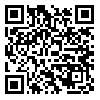Volume 6, Issue 4 (December 2021)
J Environ Health Sustain Dev 2021, 6(4): 1449-1458 |
Back to browse issues page
Download citation:
BibTeX | RIS | EndNote | Medlars | ProCite | Reference Manager | RefWorks
Send citation to:



BibTeX | RIS | EndNote | Medlars | ProCite | Reference Manager | RefWorks
Send citation to:
Kalantari N, Eini-Zinab H, Ezzeddin N, Miri N. Household Food Insecurity Scores Are Higher among Adults Infected with COVID-19: A Cross-Sectional Online Study among an Iranian Population. J Environ Health Sustain Dev 2021; 6 (4) :1449-1458
URL: http://jehsd.ssu.ac.ir/article-1-363-en.html
URL: http://jehsd.ssu.ac.ir/article-1-363-en.html
Department of Community Nutrition, Faculty of Nutrition Sciences and Food Technology, Shahid Beheshti University of Medical Sciences, Tehran, Iran.
Abstract: (2276 Views)
Introduction: Food insecurity has negative impacts on health, including the function of the immune system. The association between food insecurity and COVID-19 infection rates has not been fully understood. This study aimed to examine whether food-insecure households are more vulnerable to COVID-19 infection.
Materials and Methods: This online cross-sectional study was conducted on 2,871 Iranian adults (31 provinces), from August to September 2020. Demographic and socio-economic information was collected using a questionnaire. The Household Food Insecurity Access Scale (HFIAS) was used for assessing household food insecurity. The data analysis was performed by SPSS.22, using Chi-square test, ANOVA test, and Multinomial Logistic Regression Model.
Results: The findings indicated that healthcare personnel were at higher risk of COVID-19 (CI = 1.90, 7.05; OR = 3.66; P < 0.001). It was also shown that HFIAS scores were significantly higher among infected people compared to non-infected (CI = 1.00, 1.05; OR = 1.03; P < 0.05). Women were at lower risk of infection compared to men (CI = 0.41, 0.87; OR = 0.60; P < 0.05).
Conclusions: Based on the results, in addition to long-term policies to improve food security, policymakers are recommended to implement short-term policies to reduce the vulnerability of the community to COVID-19 virus.
Materials and Methods: This online cross-sectional study was conducted on 2,871 Iranian adults (31 provinces), from August to September 2020. Demographic and socio-economic information was collected using a questionnaire. The Household Food Insecurity Access Scale (HFIAS) was used for assessing household food insecurity. The data analysis was performed by SPSS.22, using Chi-square test, ANOVA test, and Multinomial Logistic Regression Model.
Results: The findings indicated that healthcare personnel were at higher risk of COVID-19 (CI = 1.90, 7.05; OR = 3.66; P < 0.001). It was also shown that HFIAS scores were significantly higher among infected people compared to non-infected (CI = 1.00, 1.05; OR = 1.03; P < 0.05). Women were at lower risk of infection compared to men (CI = 0.41, 0.87; OR = 0.60; P < 0.05).
Conclusions: Based on the results, in addition to long-term policies to improve food security, policymakers are recommended to implement short-term policies to reduce the vulnerability of the community to COVID-19 virus.
Type of Study: Original articles |
Subject:
Epidemiology
Received: 2021/08/17 | Accepted: 2021/10/20 | Published: 2021/12/29
Received: 2021/08/17 | Accepted: 2021/10/20 | Published: 2021/12/29
Send email to the article author
| Rights and permissions | |
 |
This work is licensed under a Creative Commons Attribution-NonCommercial 4.0 International License. |








